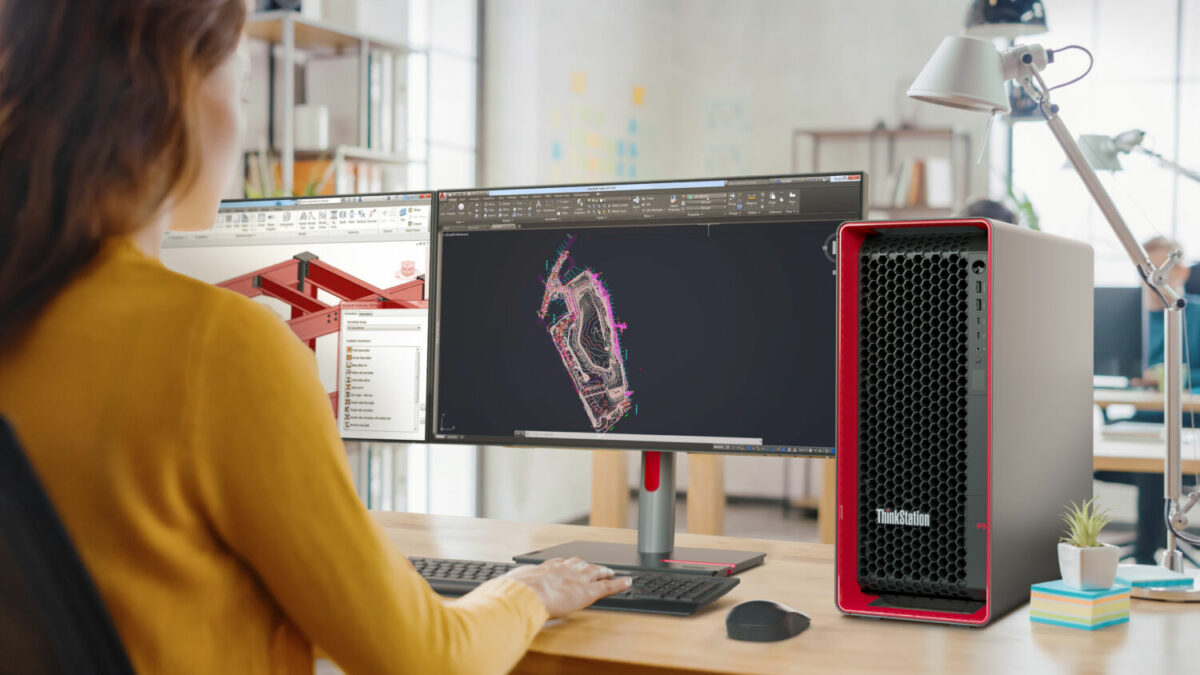A powerful and reliable desktop will always prove useful in the workplace, especially when it comes to tackling intensive tasks. With the Lenovo ThinkStation P8 workstation PC, the tech giant is looking to deliver more cores, more graphic cards, and more power – in more ways than one.
The high-end offering, which targets professionals handling enterprise-grade workloads such as real-time graphical work and AI applications, runs on the AMD Ryzen Threadripper PRO 7000 WX-Series processors and includes the option for an AMD Radeon Pro W7900 graphics card, one of the best in its class. It features a processor built on AMD’s Zen 4 architecture, packing up to 86 cores and 192 threads, as well as a 5.3Ghz clock speed.
But there’s also a second configuration. Users will be able to pair the tower workstation with up to three NVIDIA RTX 6000 Ada-generation GPUs or four RTX A4000 GPUs, which improves video rendering, real-time ray tracing, and computer aided design speeds. AMD enthusiasts, meanwhile, can choose between up to four Radeon Pro W7600 graphics cards or as mentioned earlier, one AMD Radeon Pro W7900, with the latter supporting an output of up to 12K resolution at 120Hz, one 8K output, two 6K outputs, or four simultaneous 4K outputs.

Beyond that, AMD-equipped models have more to offer. Security, for instance, is heightened with the company’s Memory Guard, preventing unauthorised access to the memory. Likewise, Secure Boot allows for boot process authentication, rounding out the AMD Ryzen Threadripper PRO processor’s compatibility with Microsoft Pluton Security and OEM-level (short for ‘original equipment manufacturer’) security features.
As the ThinkStation P8 runs on AMD Ryzen Threadripper PRO, users will have access to robust management capabilities, such as remote BIOS updates, device provisioning for setting up desired configurations, and support for Microsoft Endpoint Manager. A particularly useful perk here is the ability to service devices even if they are offline or turned off, made possible by out-of-band management.

Performance is naturally the last part of the equation. Built for both functionality and power efficiency, AMD Radeon PRO graphics cards boast multiple cores, high clock speeds, and maximum clock speeds based on the latest process nodes. Alongside AMD Radeon PRO integrated graphics processors, which generate less heat and result in longer battery life, the desktop is well-armed to take on any challenge.
Storage capacity is available in spades, too. The ThinkStation P8 can fit up to seven M.2 PCle Gen 4 SSDs with RAID support, or up to three HDDs, up to 2TB of DDR5 memory, and seven PCle slots that deliver higher speed connectivity, lower latency, and more expansion capability. To eliminate network bottlenecks, Lenovo has included 10 Gigabit of onboard Ethernet.
Alongside two USB-C 3.2 Gen 2 and two USB-A 3.2 Gen 2 ports on the front, the ThinkStation P8 will also ship with the following rear ports, offering a myriad of connectivity options:
- 2x USB-A 2.0
- 3x USB-A 3.2 Gen 2
- 1x USB-C 3.2 Gen 2×2
- 2x Ethernet port
- 1x audio line in
- 1x audio line out

The machine’s versatility fits Lenovo’s mould of constant innovation, with its ThinkStation P620 predecessor crowned as the first professional workstation to use AMD Ryzen Threadripper PRO processors.
“At Lenovo, we understand that our customers need high-quality workstations that can adapt to their changing and diverse needs. That’s why we collaborated with AMD and NVIDIA to create the ThinkStation P8, a workstation that combines power, flexibility and enterprise-grade features,” said Rob Herman, vice president and general manager, Workstation and Client AI Business Unit, Lenovo.

With high power comes high cooling demands, however, so the company has turned to an optimised thermal design to accommodate all that extra heat. Adding to the user experience is its accessible and tool-less form factor, allowing users to easily replace, add, or remove various components.
The Lenovo ThinkStation P8 powered by AMD Ryzen Threadripper PRO WX-Series and NVIDIA RTX graphics cards will be available starting Q1 2024.













